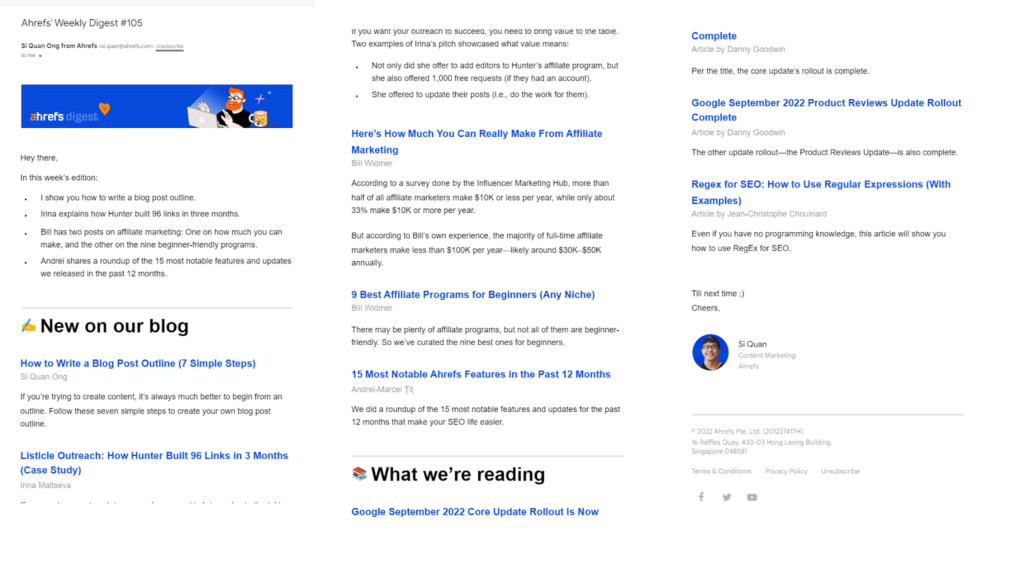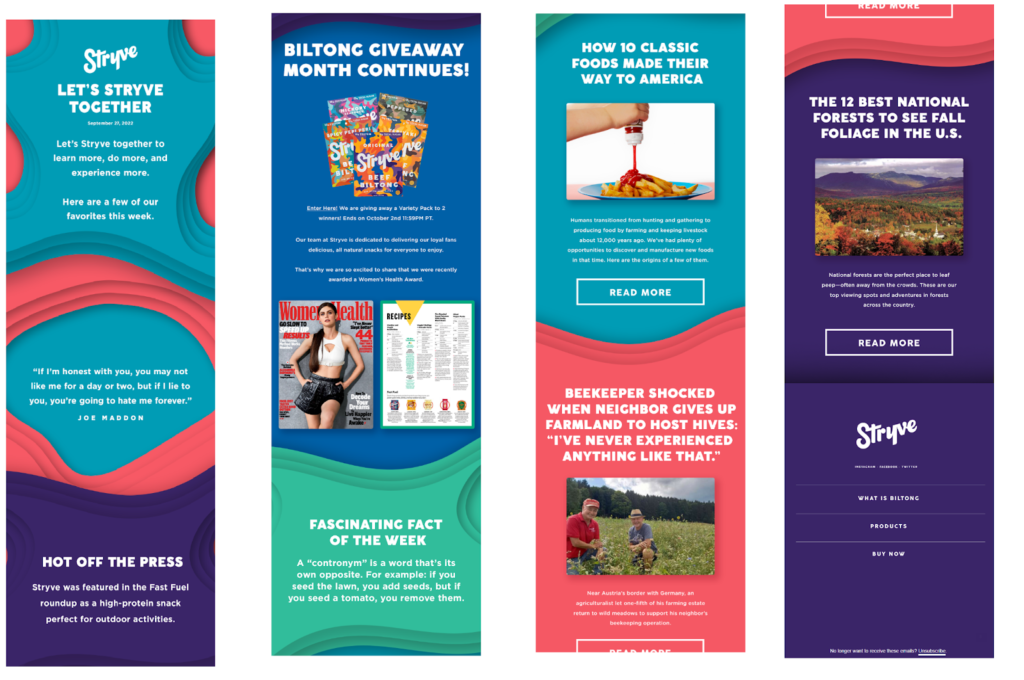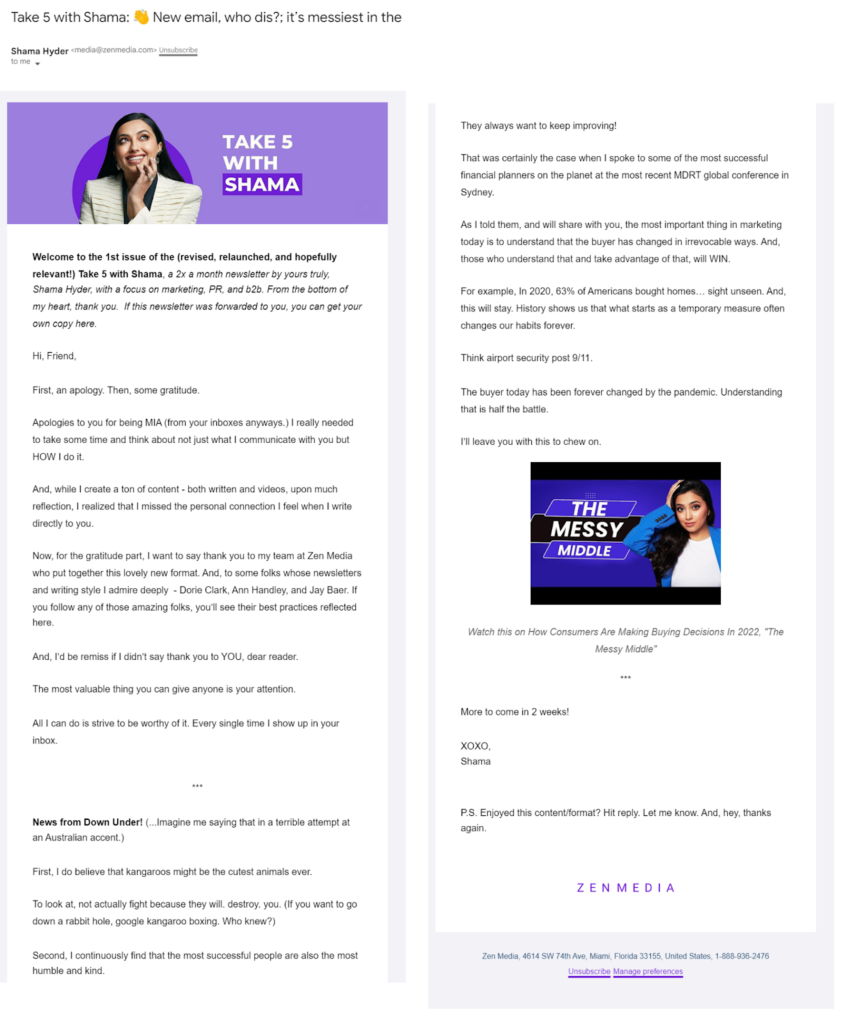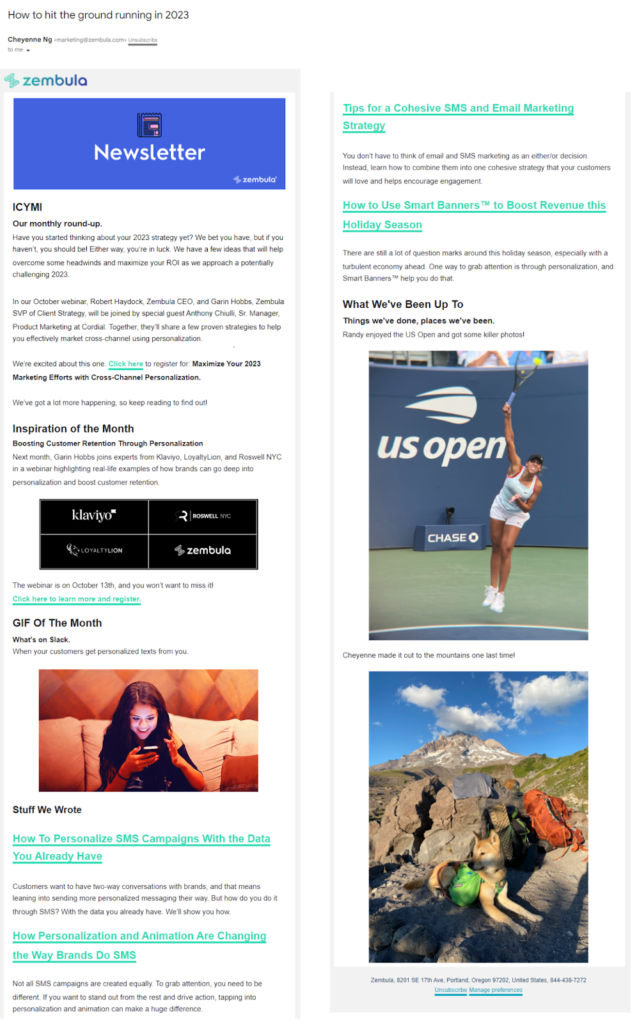Attraction marketing is the subtle art of drawing interest without squeezing a buy-in. It allows you to raise awareness of a cause via intrinsic value creation without pushing extrinsic motivation into the mix. In this post, you’ll learn how to implement attraction marketing with tactics, tips, and real-world examples.
Attraction marketing bears a lot of resemblance to celestial objects and the gravity between them.
Space has always interested me, and you can’t be into space research and not admire Carl Sagan. I’m a fan of his passion for teaching others about the cosmos and his marketing skills.
Sagan, who died in 1996, was a highly regarded astronomer, astrophysicist, and cosmologist. During the 1950s, he consulted with NASA regarding the development of the US space program. Later he taught at Harvard and Cornell universities. But that’s just part of his story.
Sagan wanted to share his passion for planetary science beyond the closed doors of the space program or in university classrooms.
And he did.
Sagan became famous as “the astronomer of the people.”
How did he attract people and make them want to explore the science of space?
Sagan achieved this feat by sharing interesting, engaging, inspiring content about his passion for the universe with others.
The PBS television program Cosmos: A Personal Voyage that Sagan and his co-creators developed was one of public television’s most-watched series, attracting five-hundred million viewers from 60 different countries.
Who wouldn’t want those metrics?
Sagan’s work inspired other scientists to create programming aimed at drawing people to the field of science, too.
Both Bill Nye and Neil deGrasse Tyson credit Sagan for inspiring them to create programs to share science with the public.
That’s exactly what attraction marketing is all about: Delivering valuable content that informs and inspires people to act.
Now, I can’t guarantee that your content will generate as many views as the Cosmos series. But I can tell you that attraction marketing will help you grow awareness, generate more leads, and strengthen your brand’s relationships with its customers.
Who knows? Maybe your next brand ambassadors will spread your gospel in the future.
Let’s explore the strategies, tactics, and examples of attraction marketing gathered here and get some inspiration juice flowing!
What is attraction marketing?

Attraction marketing is a marketing methodology that uses information sharing and other content marketing techniques to engage, entertain, and draw prospects to your brand and its products or services.
Typically, the content for an attraction marketing campaign is made free to consumers or B2B leads and may be delivered via a brand’s website, at in-person events, through email or any combination of marketing channels.
Attraction marketing works because in exchange for providing website visitors, email subscribers, and event guests something of value, the company gains their attention, trust, appreciation, and loyalty.
Attraction marketing also educates prospects and builds awareness, initiating relationships that may lead to a sale in the future.
The opposite of push or outbound marketing methods, attraction marketing’s ‘give value before you ask for business’ approach is its distinguishing characteristic.
Attraction marketing is less obtrusive and more consensual than cold calling, cold emailing, and paid ads.
Your attraction marketing content gets in front of people because they seek it out when they want and need it and because you’ve made it
7 principles of attraction marketing
|
⚠️Attraction marketing–the methodology–isn’t the same as “The Attraction Marketing Formula,” course created by Ferny Ceballos. The course applies attraction marketing methods to network-based businesses specifically.
How is attraction marketing related to other marketing methods?
Attraction marketing is called by other names and is closely related to several other marketing strategies.
When your marketing objective is to engage and draw people to your brand, there’s probably some attraction content involved.
Attraction marketing vs inbound marketing: These two have a lot in common
Inbound marketing is a type of attraction marketing and many marketers don’t distinguish between the two. But there are slight differences.
Inbound marketing tactics are usually limited to digital content and events. Attraction marketing may occur in the digital or physical world and increasingly takes place in the hybrid, physical world.
Both attraction and inbound marketing use content to generate interest in a brand, provide value to consumers, generate positive emotions, and build long-term relationships. The methodologies are rooted in interest-driven, people-first strategies.
By allowing consumers to direct their own journey, inbound marketing fulfills peoples’ desire for autonomy and instant gratification.
Attraction marketing vs content marketing: Can you have one without the other?
Content marketing, attraction marketing, and inbound marketing are sometimes used interchangeably to describe methodologies that use non-sales content to attract people to a brand.
Sharing valuable content strengthens every stage of your marketing funnel, from awareness to advocacy.
Your attraction content may be inspiring, funny, informational, entertaining, or all of these.
Not all content is attraction content, though. Marketing content may push or pull (or do both).
| A four-part framework for marketing content We sometimes categorize marketing content by objective: attraction, authority, affinity, or action. Each of these objectives may play a role in an attraction marketing plan.
|
These two examples of attraction email content present different content categories.
📧 SEO app Ahrefs’ email delivers attraction and authority content in the form of expert advice and content curation. The message (pictured below) also directs subscribers to the brand’s blog, where they can continue to learn and explore.

📧 Dried meat brand Stryve aims to build affinity and move subscribers to act. Packed with personality, the email below expresses the brand’s values, shares feel-good content with subscribers, and encourages them to enter a branded giveaway.

Attraction marketing vs relationship marketing: Complementary partners
Relationship marketing is founded on the principle that people buy from those they know, like, and trust. To achieve that most favored brand status, relationship marketing methods aim to attract.
But unlike attraction marketing, relationship marketing may leverage both push and pull strategies, including outbound sales calls, automated or triggered email sequences, and one-to-one interactions.
Once the domain of individual salespeople who got to know their prospects and customers, modern relationship marketing uses attraction methods such as sending value-adding emails to subscribers to build strong connections.
Attraction marketing vs permission marketing: Similar but distinct
Seth Godin defines permission marketing as “the privilege (not the right) of delivering anticipated, personal, and relevant messages to people who actually want to get them.”
This definition limits permission marketing to a few channels, such as subscribed emails and SMS, following an opt-in by the recipient.
Both attraction marketing and permission marketing are consumer-led. Individuals choose what content they will consume, whether they are drawn to it or opt-in to have it delivered to them.
Attraction marketing, however, isn’t limited to opt-in channels. Plus, not all emails and SMS campaigns deliver ‘pull’ content.
Many emails include a combination of entertainment or other value-adding content, sales promotions, and call-to-actions.
Attraction marketing vs organic marketing: Different categories, similar goals
In the world of digital marketing, most of your organic efforts will involve some type of attraction content. This may include value-adding content published on your website or engaging social media posts your brand makes.
However, not all attraction marketing is purely organic.
A subscription-based email campaign, for example, isn’t typically classified as organic marketing. Similarly, a promoted in-person or virtual event, interactive experience, or brand sponsorship may be attraction marketing but not fully organic.
Attraction marketing vs image marketing: One of these is not like the other
Broadcast commercials, billboards, and digital ads are intrusive, non-permission-based marketing tactics. However, not all paid ads are conversion-focused. Many of these brand communications are informational or entertaining.
Are these non-pushy ads attraction marketing?
Close. But not quite.
Sponsored programming, advertorials, commercials, or other marketing efforts that don’t promote a company’s products or services are called image marketing. An example of image marketing is Honda’s series of commercials that promote its brand slogan, “The power of dreams.”
Like attraction marketing, image marketing campaigns are intended to inform and inspire. Unlike attraction marketing, though, consumers don’t have a choice of when or where they’ll see image marketing ads.
Now that you know what attraction marketing is and is not, let’s look at why you should include attraction marketing in your marketing plans.
Why use attraction marketing?
In the modern marketplace, many people begin their buyer’s journey independently.
Prospective customers learn about problems and solutions and investigate their choices through online and offline resources and personal networks.
Ad-blocking technology and other ad avoidance services enable consumers to evade intrusive marketing tactics.
Companies must go where consumers are already searching for answers and find ways to draw consumers to their brand to be a part of the conversation.
Attraction marketing is critical to this process.
5 benefits of attraction marketing you don’t want to miss out on
Attraction marketing helps brands expand their reach and their revenue by:
- Drawing people who are already curious about a product or service or looking for a solution to the brand’s owned properties.
When attraction content is calibrated to serve the needs and solve the pain points of an organization’s ideal customer, it generates high-quality leads that are more likely to convert.
- Enabling people to become familiar with a brand and control the pace of the relationship.
Attraction marketing allows prospects to learn about a business’s values, products, or services and the experience it delivers without feeling pressured to make a purchase. This self-guided discovery facilitates the development of those all-important know, like, and trust factors.
- Triggering a natural reciprocity response in the people who enjoy the brand’s content or find it useful.
The reciprocity principle of persuasion proposes that when a person (or brand) does a favor for someone, that someone feels obligated to reciprocate by doing something for the giver in return.
Reciprocity is one of several persuasive email copywriting techniques brands use to earn conversions and build customer loyalty.
- Lowering customer acquisition costs (CAC) and increasing customer lifetime values (LTV) by supporting a full-funnel marketing strategy.
Full funnel marketing engages with consumers at every stage in their buyers’ journeys and places an emphasis on customer satisfaction, retention, and advocacy.
Attraction marketing contributes to this strategy by delivering value-adding content at every stage in the buyer’s journey, creating positive customer experiences and long-term relationships that reduce customer churn rates and increase your revenue per customer.
- Improving brands’ name recognition, reputation, and memorability.
Producing authentic, engaging, helpful, or inspiring content improves the impression consumers have of a brand and contributes to people’s awareness of the brand.
Content that generates positive emotions like relief at having found the answer to a question, a sense that a company “gets us,” or happiness because a brand’s content made us smile, creates positive experiences that make consumers more likely to remember your brand fondly.
Awesome! Attraction marketing gets people to like you, want to buy from you and tell their friends to buy from you, too.
Eh, everything has its good and bad, right?
Cons of using attraction marketing
One reason a brand might not choose to deploy an attraction marketing program is that it requires companies to invest time and money to develop the free content that supports this strategy.
And before creating the content, a brand must understand its value proposition and what types of content will attract its ideal customers.
Then the organization has to create, publish and distribute a body of content that is great enough to pull people toward it.
You know, like a planet of content—not just a little asteroid.
There’s also a risk of getting your content strategy wrong. So brands investing in attraction marketing have to be prepared to invest in continual improvement.
Finally, when a brand publishes attraction content, it is released into the world, free for anyone to find and consume.
That means an attraction marketing campaign may attract an audience that doesn’t convert.
There are steps you can take to mitigate this risk. though.
| Three tips for keeping your attraction marketing on target To reach and attract your ideal customer with the right message at the right time,
|
How to implement attraction marketing
Follow these steps to build an effective attraction marketing campaign.
Step 1: Set your attraction marketing campaign’s objectives.
These objectives should align with your overall marketing strategy and your organization’s general business objectives. A brand that is entering a new market or has limited awareness in its ideal market will have different priorities than one that is more mature.
Use a situational analysis to identify your top marketing needs and gaps in your sales funnel that attraction marketing can fill.
Step 2: Identify your value proposition and key differentiators.
Not every piece of attraction content will reveal the answer to “what’s in it for me?” directly. But it should always facilitate the discovery of this answer.
Clarify your value proposition so that you can infuse your attraction messaging with this information.
When sharing value-adding (and value-revealing) content with your audience, you’ll also want to take advantage of the opportunity to tell them why they can’t get what you offer from anyone else.
What are your differentiators?
Once you’ve identified what makes your products or services special, weave this information into your attraction content. Use articles or other content types to highlight your product’s unique features and benefits.
Step 3: Define your ideal customers and target audiences.
The better you’ve defined your ideal customers and audience, the easier it will be to create content that draws their attention specifically. This may involve narrowing the scope of the information you share or focusing on each of your target segments’ most distinctive characteristics.
Who are the people who most want or need what you offer, and what sets them apart?
Look at your existing customer data housed in your CRM or elsewhere to identify specific attributes. Don’t stop with your customers’ demographics or other attributes when defining your ideal. Also identify the job your product or service helps people do or the problem it helps them solve.
Does their outdoor sportswear need to withstand extremely cold climates?
Are they looking for a productivity tool that integrates with a specific type of software?
Do they need a meal prep service that caters to special dietary needs?
Use your proprietary customer and performance data and predictive analytics to craft detailed buyer personas that will help everyone on your team better understand who your ideal prospects are.
Step 4: Select your marketing distribution channels.
Choosing your distribution channels involves considering both your customers’ preferences and your brand’s capabilities. For instance, an experiential display at SXSW might be an amazing and effective way to engage with your ideal customer, but not every brand can make it to the big show.
Start your analysis by identifying your current marketing channels. Then determine whether those channels are effective for reaching your desired audience and suitable for attraction marketing campaigns.
In addition to choosing where you place your attraction marketing content, you will also need to define the outbound channels and methods you’ll use to promote your content (if any).
Will you use paid search to generate traffic to your blog or rely solely on organic search results? Should you place digital or traditional ads to point people to your attraction content?
Step 5: Build your messaging strategy.
With knowledge of what your organization uniquely offers, who will benefit from learning about your brand, a plan for where you’ll find and communicate with those people, and why you want to reach them, you’re ready to define your content strategy.
What will you tell people about your products or services that will lead them to choose your brand when they are ready to make a purchase?
Answer this question for each of your top targeted segments and for each stage in your buyer’s journey, subtly by supplying them with the information they need when they need it.
I’m not talking about just “facts and figures” information, either.
Communicate your brand’s values, too.
7 ways to use attraction marketing across channels

Attraction marketing is considered an inbound strategy because it draws people toward your brand. However, distributing content for attraction marketing initiatives may (and should) employ a combination of methods across your brand’s owned and third-party channels.
The top ways brands engage and attract consumers across channels include:
🧲 Publishing content on your company’s website
Blogs and other articles hosted on a company’s website top the list as one of the most familiar types of inbound nurture content. Whitepapers, ebooks, and other content that can be downloaded also enable brands to tell prospective customers their full story.
The article you’re reading right now is an example of blog attraction content. Digital one-pagers describing a product’s features and benefits, testimonial pages, downloadable guides, FAQs, and other content hosted on your websites present a galaxy of opportunities to nurture prospective customers and retain existing ones.

Whole Foods shares the brand’s values and mission on a feature page on its website. Visitors who want to learn more about reducing food waste and sustainability can click through to read other content produced by the brand.
🧲 Publishing branded and user-generated content on your social media accounts
Social media is also a popular channel. With new platforms and innovative ways to communicate on existing platforms popping up regularly, brands seeking to connect with B2C or B2B audiences can’t overlook social media.
Businesses use social media to inform and educate consumers about their products or services, their general industry, and social issues related to the brand’s values. Social media channels are also an excellent vehicle to share content about an organization’s community and culture and develop social proof through promoting user-generated content.

In this LinkedIn post, Elise Dopson of Peak Freelance shares a clip from a recent Q&A session discussing how freelancers can prepare themselves for a recession.

Haus Labs helps followers find their makeup foundation shade with a how-to post on Instagram, complete with a video demonstration.
🧲 Distributing content via video hosting sites and video-format social media platforms
Audio and video distributed on social media, webinars, and podcasts put a real person behind the message your organization is sharing. Video and audio content were popular before the pandemic, but the use of virtual presentations has skyrocketed post-pandemic.
The podcast series, Powered by Purpose, is produced by consumer goods giant Procter and Gamble.
The series introduces listeners to the people behind the brand and others who are making a difference and serving as a “Force for Good, Force for Growth” in the world, the brand explains in its blog.

Webinars and virtual conferences replaced many in-person events and enabled brands to share value-adding content during live sessions and repurpose the same content for on-demand viewing or as clips shared on social media.

Along with paid and in-person events, Nature Research and its co-sponsors draw viewers from across the scientific community with free virtual conferences addressing recent innovations and issues in the science community.
🧲 Giving away free trials, samples of products, services, experiences, or branded swag
Free trials, samples, and previews are a positive way to introduce people to your brand and discover its value for themselves. Your concept of a freebie is probably shaped by your experiences or what your company offers, but the category is really pretty broad.
In-person, a free taste of ice cream or sample snacks being distributed in a warehouse store are examples of attraction marketing. Online free trials or previews may take the form of a freemium model for an app or a free light subscription to a publication.
Ecommerce stores often include a free trial-sized product with their customers’ orders to facilitate cross-selling. The idea behind giving something away free is that consumers who enjoy the free version may later convert to paying customers.

“Try before you buy” can be a challenge when you’re shopping for new window treatments. SelectBlinds eases shoppers’ burden by letting them order up to 15 product samples to examine in person.
🧲Hosting permanent and temporary brand activations, pop-ups, or experiential events
Brand experiences that allow consumers to decide whether they’ll participate or not are a type of attraction marketing. Brand activations and brand experiences can take place online or offline or as hybrid events with in-person and digital components.
Roblox’s metaverse is a popular virtual activation destination. Dove is using the platform to extend its Dove Self-Esteem Project message to new audiences.
In September 2022, the hygiene and skincare brand announced the launch of a free game, Super U Story “the world’s first video game specifically designed to equip younger girls with the tools they need to help combat negative self-esteem.”

Dove’s free online game, Super U Story, is designed to boost young girls’ self-esteem building powers.
Some brand activations, such as pop-up stores, also serve as direct sales channels. But many others are intended solely to deliver positive experiences that create buzz and build goodwill. In our omnichannel world, most brand activations will distribute some digital content before, during and after the activation, even for in-person events.

The Peacock TV Playground at SXSW is just one of many colorful, interactive experiences brands brought to this high-traffic event. (Activation created by and images from Madefirst.com)
🧲 Offering tutorials, classes, and workshops that encourage people to explore your products and services
Virtual or in-person workshops that cover topics of interest to a brand’s ideal customer or show them how to use its products or services. Classes take conferences and webinars up a notch by delivering actionable insights to attendees.
Brands may show their support and care for their customers by offering classes or workshops that help people develop their careers or gain new personal skills. More targeted courses, such as a cake decorating class hosted by a brand that sells home baking equipment or supplies, show people how to use the business’s products.

Craft tool brand Cricut supports successful onboarding with a series of free workshops for users at every level. Shoppers considering a purchase may register for a workshop to see how the tools work before they buy.
🧲 Sending email and SMS campaigns that deliver relevant, valuable information at the just right moment
Email (our favorite) is an efficient way to communicate one-to-one with existing and prospective customers at scale via personalization.
Email can travel almost anywhere and serve as a gateway to lead your audience to other channels and content. Brands use email to share value-adding content directly and to tell subscribers about the value-adding content they can find on the brand’s website.
It’s also a vital distribution channel to inform people about online and offline events such as brand activations, webinars, podcasts, and other attraction marketing activities.
I’ll share some awesome examples showing how you can use email to deliver attraction content to your audiences at the end of this article. But here’s a sneak peek.
Uniqlo, a Japanese clothing brand with an international presence, uses email to share its corporate activities aimed at supporting sustainability.
This email features several of Uniqlo’s sustainability initiatives, shares images of its community members and invites subscribers (who can get to Soho on time) to a denim repair workshop, offering lots of value before introducing a few shopping links at the end of the message.
Uniqlo customizes the email with a preheader link to the brand’s sustainability page, where consumers can learn even more about the brand and its customer community. Email subscribers in the US are taken to the Uniqlo USA Sustainability page instead of the brand’s English-language but Japan-based page.
Here’s how the content set comes together.

I dunno, I think US website viewers might be missing out. Is that a cat? 🐈

SMS provides companies with another one-to-many channel of communication. Use SMS marketing to send time-sensitive updates and alerts to your subscribers, promote events such as pop-up activations or classes, and other value-adding messages.
Now, as promised, here’s how to use email marketing to attract and engage prospective customers, promote your other attraction marketing initiatives, and build customer loyalty.
12 examples of attraction marketing emails that pull consumers closer

📧 Moonshot invites subscribers who share the brand’s passion for sustainability to join its virtual book club.

What does this message do to attract people to the brand?
The email takes a personal approach. Moonshot’s founder Julia appears in the sender name, and she includes a personal invitation for subscribers to join the Moonshot Book Club.
She also encourages readers to reply to the email and share their thoughts about the club and climate issues.
The content of the email isn’t about Moonshot but about the club’s first featured book and includes excerpts from an interview with one of the book’s authors. Drawing subscribers to the brand’s website is a link to the full text of the interview.
📧 Online coding course provider One Month links subscribers to the answer for a FAQ.

Sharing value-adding information with your subscribers doesn’t have to be complicated. This email message goes with plain-text formatting vs. an HTML one, leaning on the human touch with an empathetic, personable tone.
Subscribers who click through can find the answer to the featured question by reading the blog or watching a video.
📧 L’Oreal uses email to promote a live TikTok with the docs event to introduce a new product.

This colorful email from skincare brand L’Oreal invites subscribers to learn about the benefits of its latest product, Pure Vitamin C, from TikTok influencers and physicians, the Dermadoctors.
What’s the attraction? Live interaction with influencers, authority to back the brand’s claims, and a chance to meet other L’Oreal (and Dermadoctors) fans.
📧 Lazy Oaf sends an email packed with personality and entertaining content.

You might expect an online publisher or B2B brand to send email newsletters that don’t include a “Shop Now” CTA at the end, but this collection of entertaining odds and ends is from clothing retailer, Lazy Oaf.
The email shows off the brand’s distinctive personality. The big draw, though, is the featured article: an interview with singer Remi Wolf who wears the brand’s gear.
📧 Zen Media charms subscribers with an introduction to a real person.

This friendly, conversational email message from Zen Media’s CEO, Sharma Hyder, puts a face with the B2B marketing and PR agency’s brand.
Sent from Sharma herself, the email includes a personal note to subscribers and offers her insights on a current marketing trend plus a link to a video that offers more details.
This brand isn’t afraid to let its CEO’s personality shine, which gives the email and video a personal feel.
📧 Formlabs invites subscribers to put its product to the test.

Sometimes you have to see and touch a product to believe that it’s all the producer says it is. Formlabs recognizes this potential objection and addresses it by sending new subscribers an invitation to order their free sample of its special purpose, industrial 3D printing resin.
The brand also invites subscribers to learn more about this resin and its benefits in an informational blog on Formlabs’ website.
As added attractions, this email is sent from and signed by a real person. Also, the copy signals that the brand listens to its customers by noting that its recommendations are based on customer feedback.
📧 Zembula sends email subscribers an invitation to attend its free webinar (and some extra value-adding content).

If you’re like me, you get a lot of webinar invites in your inbox. A lot. And, while I know that these webinars offer me a chance to gain valuable information, I have to admit that the email invites can be a little boring. Plus, if I’m super busy (which is always), there’s a good chance I’ll delete the email as soon as I see the word “webinar” in the subject line.
Nonetheless, emails are one of the best ways to get the word out when you have a webinar scheduled or available on demand. Zembula’s email attracted me because it does more than just tell me about an upcoming webinar.
The email itself adds value with several different types of content, including a “we can relate” GIF, links to the brand’s recent blog posts with summaries, and some personal photos of the team’s latest adventures.
This combination of informative and personal helps build connections between the brand and its subscribers.
📧 Waves Audio educates with every email.

Recognizing that its high-tech audio solutions take some high-tech knowledge to use, each Waves Audio newsletter includes something that adds to subscribers’ knowledge.
Content variations include how-to guides, product explanations, and advice from experts. The newsletters also include a link to the website.
Sometimes, the newsletter features a promotion prominently. But subscribers can count on finding value-adding information every time they open a Waves Audio message.
📧 Generation Love uses show and tell to make customers want to buy.

How can an email that is filled with images of your products be attractive content and not promotional? When you’ve used those images to create a guide that shows subscribers how to use your products.
That’s what Generation Love did in this email newsletter that demonstrates several clothing combinations to help shoppers choose the pieces that suit their style.
📧 Wild Birds Unlimited shares timely content with a purpose.

Wild Birds Unlimited Nature Shop knows that its subscribers are friends to wild birds.. As migration season arrives, the brand shares a guide with email recipients to help them care for and protect their wild feathered friends.
The message not only adds value but also demonstrates the brand’s value-alignment with its customers.
📧 SelectBlinds helps customers make the perfect selection.
Visitors to the SelectBlinds website can order free samples of its window blinds to help them pick the perfect finish for their windows.
The brand greets new email subscribers with a welcome email that includes a video guide for selecting blinds and emphasizes the free trial offer.

SelectBlinds welcomes new email subscribers and overcomes objections with a free sample offer, a how-to video, and a reassuring guarantee.
📧 Miki House engages email to promote offline activation.
Digital native consumers don’t view their online and offline worlds as separate. Marketers shouldn’t either.
Let your customers know what’s happening at your local stores through email and other digital communications and provide more reasons for them to stay in touch with your brand.

Miki House invites local subscribers to attend an in-person event in this email blast with all the details about a happening-now pop-up event.
Follow these attraction marketing tips for out-of-this-world results
As you prepare your attraction marketing strategy, keep the fundamental principles of attraction marketing in mind. Look for ways to add value and create positive experiences for your prospects and customers at every stage in their journey.
Respect your audience’s privacy and preferences. Let people come to you rather than interrupting them and demanding their attention. Use an omnichannel approach to make it convenient for people to find the information you’re sharing.
Your content should always be likable and personalized when possible. Focus on messaging that is relational, not transactional. People prefer brands that treat them as human beings, not numbers.
This is where email can give your attraction marketing an extra edge.
By creating templates that incorporate dynamic email content, you can personalize messages for each subscriber while still distributing your content in bulk.
Remember that building your brand’s reputation and credibility takes time. But also remember that losing that credibility can happen fast if you attempt to manipulate or deceive your audience. Don’t use false urgency or scarcity messages to push people to act.
Focus on creating quality content over distributing huge quantities of low-value content. Carefully evaluate not only the information your content conveys but also the way in which it is conveyed.
- Are you optimizing your content for each distribution channel?
- Is your content accessible and inclusive?
- Are there other ways that you can remove friction and add delight to your marketing efforts?
How do you know if your attraction marketing plan is working?
A brand’s success at attraction marketing is measurable through email engagement metrics, growth and revenue data, consumer perception of the brand, and comparisons of the brand’s reputation to those of competing brands.
Net promoter scores, sentiment analysis, and evaluation of whether consumers know, like, and trust a brand are all relevant to determining whether you’ve been successful at attraction branding.
Drawing people to your brand requires a consistent, coordinated effort that uses all your marketing channels and persuasive skills.
Once you’ve engaged a new website visitor and converted them to an email subscriber, don’t lose their attention.
Make sure your emails follow best practices for preview text, providing subscribers with all the information they need to make that click. If your emails aren’t read because they land in the spam folder, follow these tips to understand how to prevent your emails from reaching the spam.
















